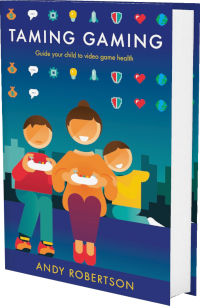 Android
Android iOS
iOS Mac
Mac Switch
Switch Wii
Wii Wii U
Wii U PC
PC PS4
PS4 PS5
PS5 Xbox One
Xbox One Xbox X|S
Xbox X|SWe've documented 24 accessibility features for Mario vs. Donkey Kong, including Fully Voiced (Or No Speech), Low Pressure, No Quick Reactions, Select Difficulty and No Button Combos. Its accessibility is strongest in Controls and Navigation but it also has features in Visual, Getting Started, Reading, Difficulty and Audio to reduce unintended barriers.
This report is created with input from accessibility experts and the player community to help people find games that have the accessibility features they require. Once you have found potential games on the database, there are excellent specialist accessibility sites that offer in-depth reviews to guide your purchasing decisions.
Our accessibility examiner, Ben Kendall, first checked Mario vs. Donkey Kong (Series) accessibility 2 years ago. It was re-examined by Ben Kendall and updated 9 weeks ago.
 Accessibility Notes
Accessibility Notes
While individual reactions don't need to be quick, there is a time limit on each level. Each room you clear adds extra time to the timer. You can also opt for the Casual play style, which removes the timer entirely and gives you extra lives. It's important to note that the Casual play style is only available in single-player mode.
While the text is high contrast, it isn't all large, making it occasionally hard to read. there are no subtitles for the opening cutscene, which is voiced in English as opposed to gibberish as in most other Mario games. The buttons that add or remove different blocks are colour-coded, which could present a challenge for colourblind players, but you can find out which blocks a button controls by activating it once and seeing which blocks appear.
As it is played on a 2D plane, it is quite straightforward to discern the location of the end of the level.
As all the necessary information to play the game is communicated visually, no sound is needed.
 Game Details
Game Details
Release Date: 24/05/2004, updated in 2024
Out Now: 3DS and 2DS, DS and Wii U
Skill Rating: 5+ year-olds
Players: 1-2
Genres: Brain Game, Platform and Puzzle
Accessibility: 24 features
Components: 2D Side-On and Pixels
Developer: Nintendo (@Nintendo)
Costs: Purchase cost
 Controls
Controls
We've documented 5 accessibility features for Controls in Mario vs. Donkey Kong which deal with how you control the game, different options for alternative inputs and whether you can remap these settings to suit your needs.
Gamepad
Can play with the following:
Multiple Buttons & Single Stick: Can play with multiple buttons and a stick.
Button Combinations
Specific button operation required to play
Holding Down Buttons Optional: Holding down buttons for prolonged periods (a second or more) is not required or can be switched to toggling the action on and off. This is in addition to the movement stick/button which is not considered a hold for this purpose.
Rapid Repeated Pressing Optional: Quick, repeated button pressing (more than 2 times a second) is not required, can be skipped or switched to holding a button to trigger a repeated action.
No Simultaneous Buttons: Only one button or key required at a time, in addition to direction stick(s).
Controller Vibration
Informative Vibration: Controller vibration indicates events or interactions in the game, echoing visual and audio cues. This can provide additional information about progress, approaching enemies or hitting a target.
Similar Games With More Accessibility Features for Controls
If you want to play Mario vs. Donkey Kong, but it doesn't offer the Controls accessibility features you require, these similar games extend the Controls accessibility:
- Mario Kart 8 Deluxe (9 Controls Features)
- Mario + Rabbids: Kingdom Battle (7 Controls Features)
- Mario + Rabbids: Sparks of Hope (6 Controls Features)
- Bridge Constructor (6 Controls Features)
 Difficulty
Difficulty
We've documented 2 accessibility features for Difficulty in Mario vs. Donkey Kong which deal with how you can adjust the challenge of play, and whether this is locked once chosen or can be adjusted as you play.
Difficulty Options
Select Difficulty: Select the level of difficulty from a range of presets. This not only offers a way to adjust the challenge of a game but enables you to do so without dealing with individual criteria.
Adjust After Setting
Adjustable Between Levels: You can adjust the difficulty between levels/rounds. Although you have to restart your checkpoint or level, this enables you to adjust the difficulty after selecting it at the beginning of the game.
Similar Games With More Accessibility Features for Difficulty
If you want to play Mario vs. Donkey Kong, but it doesn't offer the Difficulty accessibility features you require, these similar games extend the Difficulty accessibility:
- Mario + Rabbids: Sparks of Hope (3 Difficulty Features)
- Mario Kart Live: Home Circuit (3 Difficulty Features)
 Getting Started
Getting Started
We've documented 4 accessibility features for Getting Started in Mario vs. Donkey Kong which deal with what support is offered to get started with the game. This includes customising the experience when you first open the game via any onboarding processes it provides as well as tutorials and other assistance when you first start playing.
Assistance Getting Starting
These features aid your play of the game in terms of cognitive load on learning controls, dealing with pressure and coping with the environment and challenges.
Tutorials: There are helpful tutorials and instructions on how to play. Information is provided in a timely manner, with appropriate level of detail.
Reaction-Time Not Critical: Individual game actions don’t need quick reactions, or there are settings to lower the requirement for quick reactions. This means you don't need to quickly press a button in response to an on-screen prompt, target a fast-moving target or skillfully complete a scenario against the clock.
Low Pressure: Game tasks aren't time-limited or there's a low-pressure mode. This avoids the pressure of being put on the clock for overarching missions, or failing tasks because you didn't reach a destination in time.
No Jump Scares: No sudden loud noises or popping-up scary visuals that unexpectedly appear without warning, or the option to disable them.
Similar Games With More Accessibility Features for Getting Started
If you want to play Mario vs. Donkey Kong, but it doesn't offer the Getting Started accessibility features you require, these similar games extend the Getting Started accessibility:
- Hamster All Stars (6 Getting Started Features)
- Lemmings (6 Getting Started Features)
- Mario Kart 8 Deluxe (6 Getting Started Features)
- Toki Tori (5 Getting Started Features)
 Reading
Reading
We've documented 3 accessibility features for Reading in Mario vs. Donkey Kong which deal with how much reading or listening comprehension is required, how well the game provides visual and audible access to the text and whether subtitles and captions are a good fit for purpose.
Reading Level
How much reading is required to play the game's main path or story and how complex the language is. The presence of voiced characters doesn't reduce this requirement, as it's recorded as a separate datapoint.
No Reading: No reading is required, other than simple menus. The game either has no text or can communicate textual content with visuals and interactions. If reading isn't required because the text is voiced the All Dialogue is Voiced feature indicates this.
Text Visibility
High Contrast Text: Text colour contrasts to the background or can be adjusted to be. The text in menus, instructions and other information is presented in high contrast with a solid background.
Voice Acted
All Dialogue is Voice Acted (Or No Speech In Game): All of the game dialogue and narrative can be voiced, or there is no speech in the game. This means there is no requirement to read the dialogue and narrative text to play the game.
Similar Games With More Accessibility Features for Reading
If you want to play Mario vs. Donkey Kong, but it doesn't offer the Reading accessibility features you require, these similar games extend the Reading accessibility:
- Super Mario Galaxy (7 Reading Features)
- Bridge Constructor (6 Reading Features)
- Nuclear Blaze (6 Reading Features)
- Mario + Rabbids: Kingdom Battle (6 Reading Features)
 Navigation
Navigation
We've documented 5 accessibility features for Navigation in Mario vs. Donkey Kong which deal with how the game provides guidance and assistance to navigate its worlds. These are only for games that have traversal and exploration in 2D and 3D spaces.
Clarity
Large Clear Navigation: The in-game navigation and maps are clear to read. They offer large text and offer markers that are large and of high contrast. Where text or information is small, there are settings to zoom-in and increase visibility.
Clear Mission Objectives: The game provides clear, structured missions with directional guidance and advice on which can be attempted next. This also indicates (ideally on maps where they are provided) which missions can't be attempted because you do not have the appropriate items yet.
Menu Navigation
Menu Audio Cues: Navigating menus provide an audio cue for each selection.
Digital Menu Navigation: Menu choices with Gamepad can be made without using an analogue stick to guide a cursor to a selection. For example, using D-Pad, buttons or the Stick to change menu selection in a single action.
Menus Don't Wrap: Menus don't wrap and stop the cursor at the bottom of the list if you press down. Or menus do wrap but make it clear that you are back at the top of the list with sound or narration.
 Visual
Visual
We've documented 5 accessibility features for Visual in Mario vs. Donkey Kong which deal with how you can adjust the visuals to suit your needs, and offer additional information if you can't hear the game.
Contrast
Medium Contrast: Game uses generally well contrasting and bright visuals, or has a slider to make this the case.
Visual Distractions
No Busy Backgrounds: No distracting backgrounds or you can make them static or blank. This includes the absence of other movement elements in the background that might distract or confuse the action. Where foreground contrast is high, this includes games with some movement in the background that doesn't make it overly difficult to distinguish what is happening.
Audio Cues for Visual Events
Audio Cues for Visual Events: Audio is provided to indicate visual events. Game events or progress highlighted by visual icons, effects or animations are also accompanied by audio to signify that progress. This is useful for blind players.
Menu Audio Cues: Navigating menus provide an audio cue for each selection.
Motion Sickness Friendly
Motion Sickness Friendly: Doesn't have 3D movement elements that may trigger motion sickness, like motion blur, depth of field and field-of-vision. Or includes the ability to disable motion blur, depth of field and field-of-vision effects.
Similar Games With More Accessibility Features for Visual
If you want to play Mario vs. Donkey Kong, but it doesn't offer the Visual accessibility features you require, this similar game extends the Visual accessibility:
- Pyro Jump Rescue (7 Visual Features)
 Audio
Audio
We've documented 1 accessibility feature for Audio in Mario vs. Donkey Kong which deals with how you can adjust the audio of the game and whether audio cues compensate for aspects of the game that are hard to see.
Play Without Hearing
Play Without Hearing: No audio cues are necessary to play the game well.
Similar Games With More Accessibility Features for Audio
If you want to play Mario vs. Donkey Kong, but it doesn't offer the Audio accessibility features you require, these similar games extend the Audio accessibility:
- Donkey Kong Country Returns (3 Audio Features)
- Mario Kart 8 Deluxe (3 Audio Features)
- Mario + Rabbids: Sparks of Hope (2 Audio Features)
- Pyro Jump Rescue (2 Audio Features)
System Accessibility Settings
In addition to the accessibility features provided in the game, you can also use system-wide accessibility settings:
Nintendo Wii U
The Wii U has some limited settings, such as disabling rumble and selecting mono audio.
Read more about system accessibility settings.
Accessibility Report supported by VSC Rating Board, PlayabilityInitiative and accessibility contributors Ben Kendall and Andy Robertson












